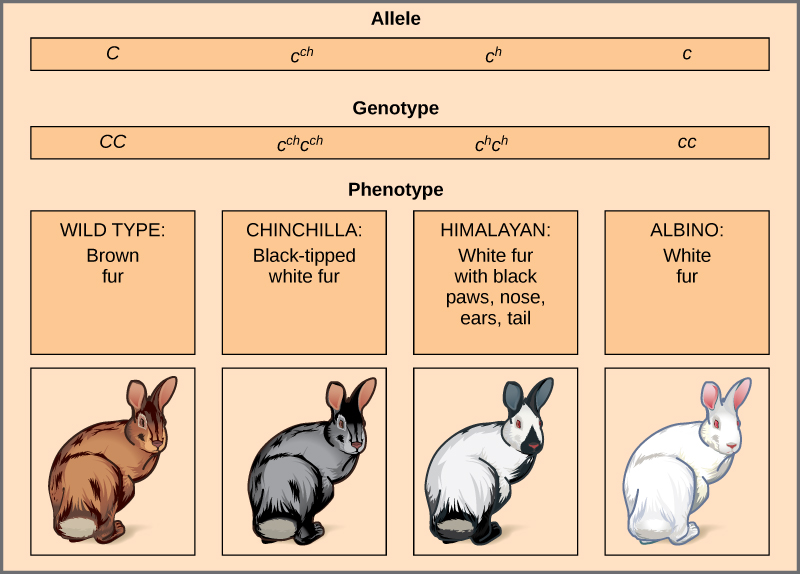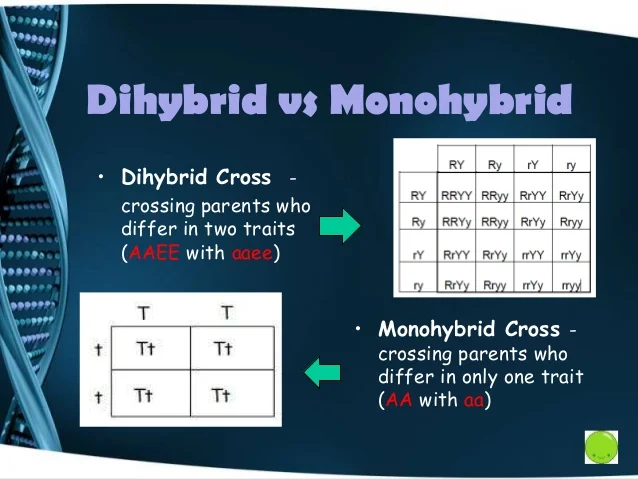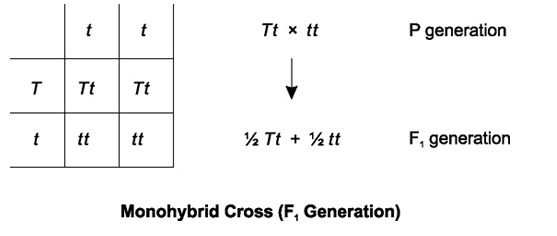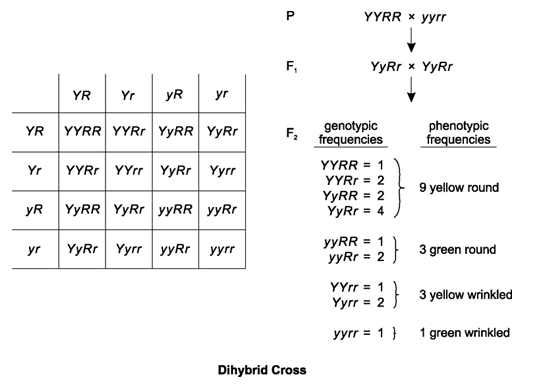Heredity
Heredity is related to genetics. To determine the traits that a generation will have, we must examine the traits that the previous generation had and then perform some mathematical calculations.
Probability rules are used in genetics. The multiplication rule of probability states that the probability of two or more independent events occurring together is the product of the probabilities of each event. For example, the probability of getting two heads on two consecutive tosses of a coin is 1/2 x 1/2 = 1/4.
Before we dive into genetics, we must go over some of the commonly used terms:
- Genes are the parts of chromosomes that code for particular traits.
- Alleles are the different varieties of genes. Pea plants, for example, have two alleles for stem length: the tall allele and dwarf allele.
- The locus refers to the location on the chromosome where a gene can be found.
- Homologous chromosomes are pairs of chromosomes that have the same genetic information. Each chromosome comes from each parent, so one allele on one chromosome might be different from the same allele on the other chromosome.
- Alleles can be either dominant or recessive. The dominant alleles are the traits that are actually displayed. As an example, in pea plants, the tall stem allele is dominant and the dwarf allele is recessive. When we are solving genetics problems, the dominant allele is indicated by a capital letter while the corresponding recessive allele is indicated by the same letter but in lowercase.
- A homozygous dominant organism is an organism that has two dominant alleles, while a homozygous recessive organism is an organism that has two recessive alleles. A heterozygous organism is an organism that has one dominant allele and one recessive allele.
- An organism's phenotype is what trait the organism can be physically seen to have and the organism's genotype is the genes that the organism has which codes for the physical trait.

A scientist named Gregor Mendel discovered important laws of genetics and how organisms inherit traits from their parents. He developed two laws:
- The law of segregation states that alleles are randomly put into gametes. Each gamete only contains one copy of each chromosome.
- The law of independent assortment states that the migration of one allele to a pole does not affect the migration of another allele to a pole of the cell.
To discover these laws, Mendel experimented with pea plants. He crossed, or mated, two pea plant varieties to create hybrid offspring. The parents were called the P generation, the first generation offspring were called the F1 offspring, and the second generation offspring were called the F2 offspring. P represents parent and F represents filial.
Additionally, there are two types of genetic crosses:
- Monohybrid crosses are crosses involving only one trait. For example, a cross between a tall (TT) plant and a dwarf (tt) plant.
- A dihybrid cross, on the other hand, involved two traits. An example is a cross between a tall, purple plant (TTPP) and a dwarf, white plant (ttpp).

Let's examine the two types of crosses in further detail now.
Monohybrid Crosses
Most crosses usually involve alleles in which one is completely dominant to another. This is called complete dominance. This means that if an organism has both a dominant and recessive allele, only the dominant allele will be expressed.
To perform a cross between a tall plant (TT) and a dwarf plant (tt), we must first list the alleles for each plant when the segregate. The tall plant will have the alleles T and T, while the dwarf will have the alleles t and t. Then create a cross as shown in the image below:

Based on the ratios of genotypes in the squares, we can determine that 1/2 of the organisms will have genotype Tt and phenotype tall, while the other 1/2 will have genotype tt and phenotype dwarf.
Dihybrid Crosses
Dihybrid crosses involve two traits and two different sets of alleles. Let's say Y (yellow) and y (green) are the alleles for seed color and R (round) and r (wrinkled) are the alleles for seed texture. We must determine the offspring genotypes when a yellow and round seeded plant (YYRR) is crossed with a green and wrinkled seeded plant (yyrr). First, we must determine the possible gametes of the first plant. All the gametes must be YR. The second plant will have all gametes yr. When crossed, all offspring plants in the F1 generation will have the genotype YyRr. Now let's cross two of these plants. Both plants will have gametes YR, Yr, yR, and yr. Now make a cross as shown in the image below:
